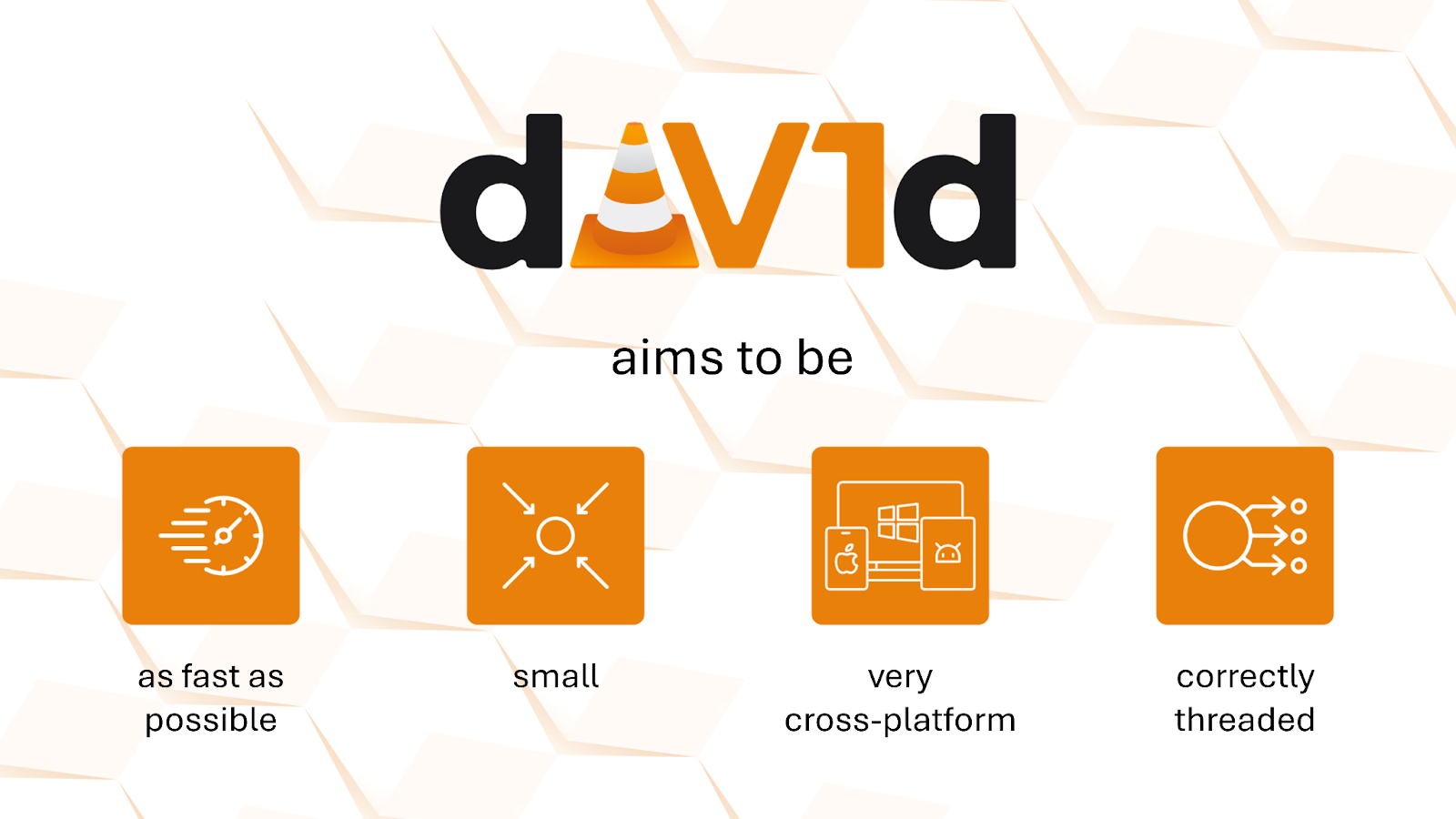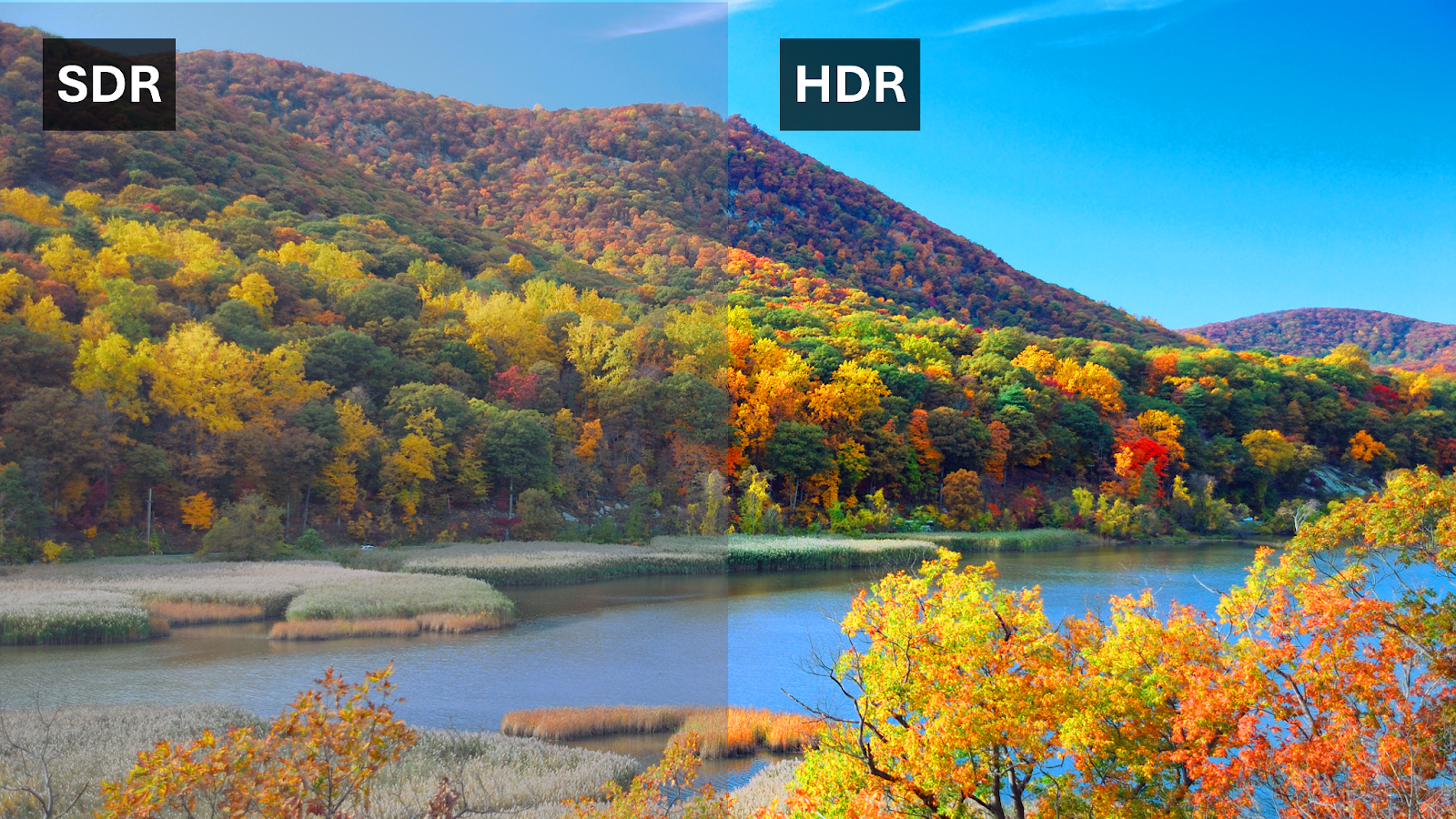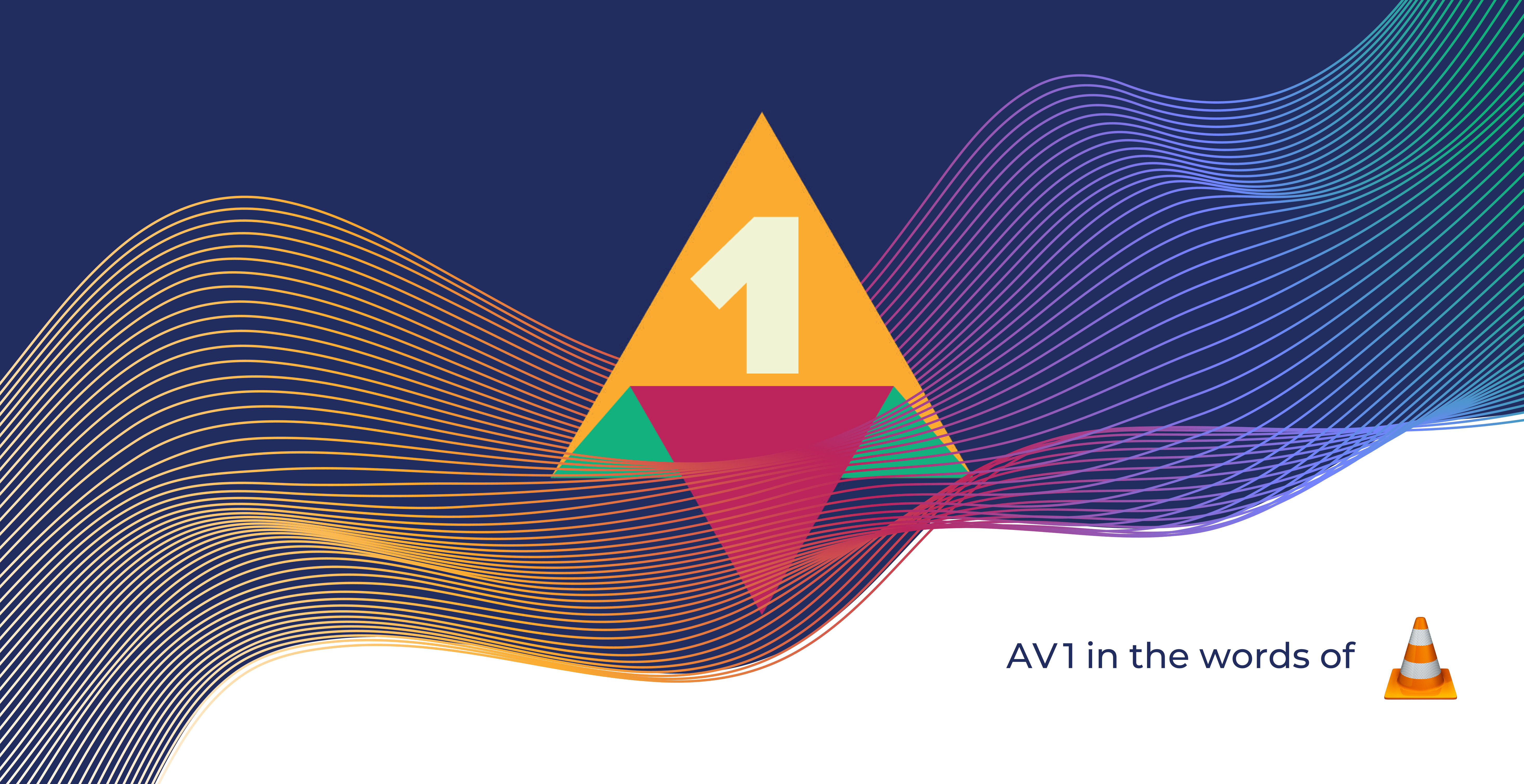VideoLAN Continues Legacy of Innovation with AV1
Originally famous for the open-source VLC media player, VideoLAN’s most recent star product is the dav1d AV1 decoder. Dav1d became the most-used AV1 decoder with its adoption by Android and Apple, and it’s now used in every browser from Safari to Chrome to Edge to Firefox and in most of the Android, iOS, Mac OS, Windows, and Linux operating systems.
Jean-Baptiste Kempf, VideoLAN’s president and lead VLC developer, sat down with Alliance for Open Media (AOMedia) to talk about AV1, dav1d, and AOMedia membership
The AV1 Differentiator
The fact that AV1 is an open-source video codec that is both efficient and competitive is its main claim to fame.
"In the past, open-source codecs were not competitive in terms of quality or performance. AV1 changed that," said Kempf.
Leveraging AV1 to Drive Innovation
VideoLan detected an early challenge in AV1 adoption: not all manufacturers were including hardware decoders in their devices, quickly enough. For AV1 to be successful, VideoLAN suggested having a very efficient software decoder, until hardware decoders become the norm. So VideoLAN developed dav1d, a software decoder designed to overcome this limitation.
Indeed, thanks in part to dav1d, AV1 is also being integrated into tools. "In the other open-source community tools we have, like VLC and FFmpeg, we also have good integration of AV1 on both the encoding and decoding side with dav1d,” Kempf continued.

The AV1-dav1d Synergy
Google’s adoption of dav1d will mean improved video playback on Android devices without the need for dedicated AV1 hardware decoders. The result is that budget and mid-range devices can play AV1-encoded videos seamlessly.
"If you have a hardware AV1 decoder on an Android device, that's good. But if you don't, then you can fall back to a software decoder,” said Kempf. “And the dav1d software decoder is the fastest that we have, which is why Android is now using it.”
Dav1d plays videos smoothly without consuming too much power. For content developers, the challenge lies in optimizing the number of frames they can output relative to CPU usage. Increasing speed while enhancing efficiency allows them to complete the same tasks using less power.
Testing, including in partnership with companies like Meta, Nvidia, AMD, and Intel, was important to the success of dav1d. "We did a lot of tests on a lot of devices to be sure that we were the fastest in all the configurations. The threading complexity of dav1d is quite strong, and that's a plus. And that's based on all the benchmarking that we've been doing,” noted Kempf.
Research is also ongoing into using accelerated dav1d with the latest GPUs and graphics cards, including for live AV1 encoding.
For Players Large and Small
“Because AV1 decoders are now shipped in so many browsers by default, more and more people will be using AV1 instead of H.264,” said Kempf.
“Of course, the larger companies that were part of creating the AV1 standard are the ones that deployed it faster,” noted Kempf. “But it's going to get deployed a lot now by everyone. In my opinion, the choice is between H.264 and AV1.”
Effective for Low-end Mobile Devices
Kempf comments on how well AV1 works for low-end mobile devices thanks to dav1d, saying, “It works better and consumes less CPU than VP9, for example."
Kempf continues, “The problem is that the higher you go in bitrate, the entropy decoder takes more CPU and that becomes an important challenge for software decoders.”
But things have improved since the VideoLAN team started working on dav1d four years ago. “Now, even the low-end devices are very fast, and they can decode all 720P 60FPS without any problem, even in software decoding,” he said.

AV1’s HDR and Live Video Performance
AV1 is HDR-ready. Kempf notes, “Technically, everything you could do with HEVC, you can do with AV1 without any problems.”
“The ability to process ten-bit and twelve-bit depth videos very easily was built into the initial design of AV1. It now has robust support for metadata, including HDR10, and HDR10+,” said Kempf.
It also performs well for live video on both the encoding and decoding side. “We have hardware and software encoders that can encode AV1 live even at 4K and in HDR without any problems. The decoders work as well. I think AV1 is ready for live usage and is quite competitive with other options.”
The Future of AV1
Now that AV1 adoption has seen a dramatic rise, Kempf thinks adoption will continue to increase worldwide. “The next two years are going to be key because we have good hardware decoders, very good software decoders, and very good software encoders. Hardware encoders are now becoming available for AV1. And again, AV1 has a 40% to 50% bitrate reduction for the same quality compared to H.264, which is quite massive."
He added, “I think a lot of the websites and apps are going to default to H.264 and then to AV1 as soon as they can."
How AOMedia Membership Helps VideoLAN
“Being part of AOMedia shows that VideoLAN is an excellent contributor to AV1, working with other companies to make it faster and better. It also helps VideoLAN optimize its own projects,” said Kempf.
“For example, some improvements in the encoding make it easier to decode while giving some good gains, which is quite important. And we need to work with the other people who are part of AOMedia to do this work,” continued Kempf.
